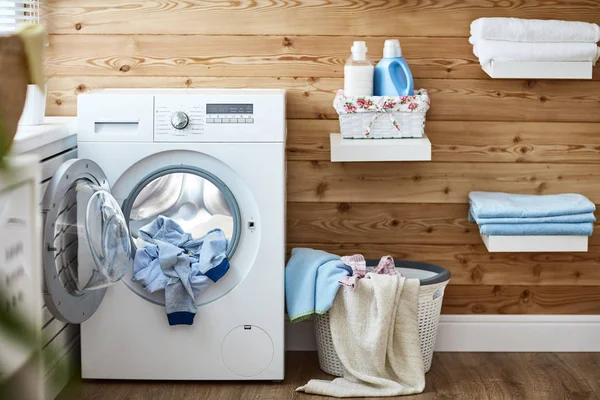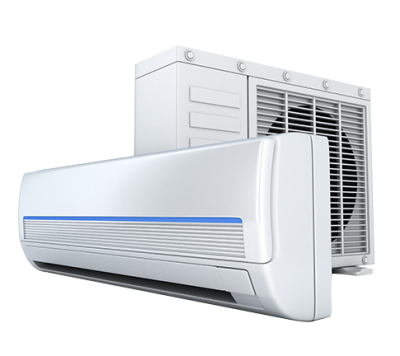The Ultimate Guide to Washing Machine Cleaning: Tips, Tricks, and Why It Matters
Washing machines are the unsung heroes of our household, tirelessly churning through loads of laundry day after day. But while they diligently clean our clothes, we often forget that they too need some TLC to keep functioning optimally. Regular cleaning and maintenance of your washing machine not only extend its lifespan but also ensure that your laundry comes out fresh and clean every time. In this comprehensive guide, we’ll delve into the importance of washing machine cleaning, provide step-by-step instructions on how to clean different types of machines, share tips and tricks for keeping your appliance in top condition, and address common issues and troubleshooting techniques.

Why Cleaning Your Washing Machine Matters
You might be wondering why you need to clean a machine that’s designed for cleaning. After all, isn’t the whole point of a washing machine to rid clothes of dirt and grime? While that’s true, washing machines themselves can become breeding grounds for bacteria, mold, and mildew if not properly maintained. Here’s why cleaning your washing machine is crucial:
- Prevents Odors: Over time, detergent residue, dirt, and moisture can accumulate in your machine’s drum, seals, and detergent dispenser, leading to unpleasant odors that can transfer to your clothes.
- Maintains Performance: A clean washing machine operates more efficiently, ensuring that your clothes are thoroughly cleaned with each cycle. Buildup of grime and mineral deposits can hinder the machine’s ability to agitate, rinse, and spin effectively.
- Prevents Mold and Mildew: Front-loading washing machines, in particular, are prone to mold and mildew growth due to their airtight seals and tendency to retain moisture. Regular cleaning helps prevent the formation of these harmful substances, which can adversely affect your health and the cleanliness of your clothes.
- Extends Lifespan: Like any appliance, washing machines have a limited lifespan. However, proper maintenance, including regular cleaning, can help prolong the life of your machine and save you money in the long run by reducing the need for repairs or premature replacement.
How to Clean Your Washing Machine
Cleaning your washing machine might seem like a daunting task, but it’s actually quite simple and doesn’t require any special equipment. Here’s a step-by-step guide on how to clean both top-loading and front-loading washing machines:
Top-Loading Washing Machine:
- Gather Your Supplies: You’ll need white vinegar, baking soda, a soft brush or sponge, and a clean cloth.
- Clean the Drum: Fill the drum with hot water and add two cups of white vinegar. Run a complete wash cycle on the hottest setting.
- Clean the Exterior: While the machine is running, dip a sponge or cloth in a mixture of water and mild detergent and wipe down the exterior surfaces of the machine.
- Clean the Agitator: If your machine has a removable agitator, take it out and scrub it with a brush or sponge dipped in soapy water. Rinse thoroughly and reinstall.
- Clean the Dispenser: Remove the detergent dispenser and soak it in a mixture of equal parts water and vinegar for about 30 minutes. Scrub with a brush to remove any buildup, then rinse thoroughly and reinstall.
- Run a Rinse Cycle: Once the cleaning cycle is complete, run an additional rinse cycle to ensure that all traces of vinegar are removed.
- Dry Thoroughly: Leave the lid or door of the machine open to allow it to air dry completely.
Front-Loading Washing Machine:
- Gather Your Supplies: You’ll need white vinegar, baking soda, a soft brush or sponge, and a clean cloth.
- Clean the Door Seal: Inspect the rubber door seal for any visible mold or mildew. Wipe it down with a mixture of equal parts water and vinegar, paying extra attention to any crevices where moisture can accumulate.
- Clean the Drum: Add one cup of baking soda to the detergent dispenser and two cups of vinegar to the drum. Run a complete wash cycle on the hottest setting.
- Clean the Dispenser and Filter: Remove the detergent dispenser and clean it with soapy water and a brush. Check the filter (located at the bottom front of the machine) for any debris and clean it if necessary.
- Clean the Exterior: While the machine is running, wipe down the exterior surfaces with a sponge or cloth dipped in soapy water.
- Dry Thoroughly: After the cleaning cycle is complete, leave the door open to allow the drum to air dry completely.
Tips and Tricks for Maintaining a Clean Washing Machine
- Use High-Efficiency Detergent: High-efficiency (HE) detergent is specifically formulated for use in modern washing machines and produces fewer suds, which helps prevent residue buildup.
- Leave the Door or Lid Open: After each wash cycle, leave the door or lid of your washing machine open to allow moisture to evaporate and prevent mold and mildew growth.
- Clean the Machine Regularly: Aim to clean your washing machine at least once a month to prevent the buildup of grime and odors.
- Inspect and Clean the Drain Pump: Periodically check the drain pump for any obstructions, such as lint or debris, and clean it if necessary to prevent drainage issues.
- Use Hot Water: Running occasional hot water cycles helps dissolve detergent residue and kill bacteria and mold.
- Avoid Overloading: Overloading your washing machine can prevent proper agitation and rinsing, leading to inadequate cleaning and potential odors.
Common Issues and Troubleshooting
Even with regular cleaning and maintenance, washing machines can develop issues from time to time. Here are some common problems and troubleshooting tips:
- Odors: If your washing machine develops a foul odor, try running a cleaning cycle with hot water, vinegar, and baking soda. You can also leave the door or lid open between washes to allow the machine to air out.
- Leaking: Leaks can occur due to damaged seals, hoses, or valves. Inspect these components for any signs of wear or damage and replace them if necessary.
- Drainage Issues: If water is not draining properly from your machine, check for clogs in the drain hose or pump filter. Clear any obstructions and ensure that the hose is not kinked or damaged.
- Excessive Noise: Unusual noises during the wash cycle could indicate a problem with the drum bearings, motor, or suspension system. Contact a professional technician to diagnose and repair the issue.
- Poor Cleaning Performance: If your clothes are not coming out clean, check the detergent dispenser for clogs or residue buildup. You may also need to adjust the amount of detergent you’re using or switch to a different type of detergent.
By following these tips and incorporating regular cleaning and maintenance into your laundry routine, you can keep your washing machine running smoothly and efficiently for years to come. Not only will this save you time and money on repairs, but it will also ensure that your clothes are always fresh and clean, just as they should be.
Check More about Washing Machine Cleaning on This Link https://www.gooezy.com/washing-machine-cleaning

